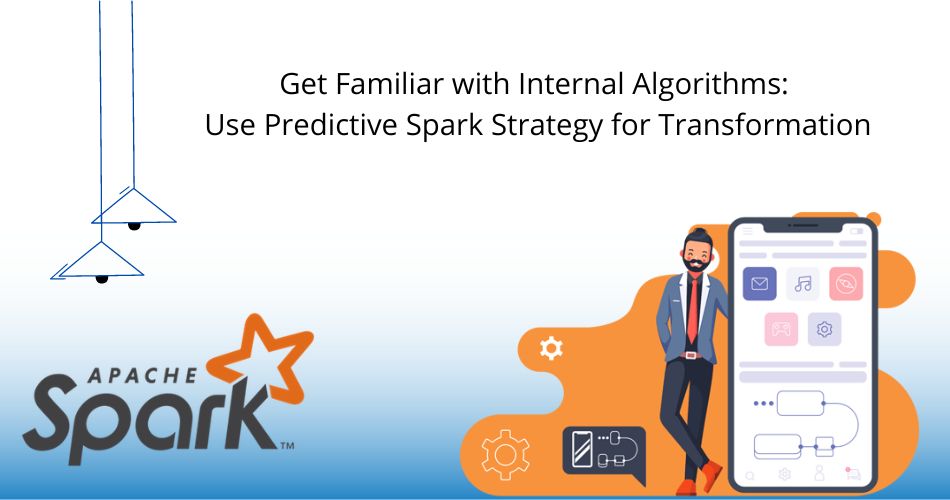Apache Spark is a distributed computing platform for high-performance data processing that is free and open-source. There are a number of important areas where the Spark programming paradigm surpasses the conventional Hadoop MapReduce methodology. First and foremost, Spark allows for in-memory calculations, which makes it much quicker than MapReduce. Second, Spark is capable of supporting a variety of computing paradigms, including stream data processing and interactive SQL queries, out of the box. Additionally,
Spark has Out-of-the-Box modules that serve general-purpose data processing needs, such as machine learning and graph processing, as well as specific data processing requirements. Spark offers a number of distinct programming interfaces (APIs) on top of its basic components (SQL, Scala, Java, Python, and R). Spark has emerged as a key component of contemporary business intelligence and advanced Apache spark analytics systems as a result of its many benefits.
In addition to the preceding statement, the speed of Spark is currently considered to be its most important characteristic. Compared to other similar systems, Spark’s in-memory processor method is more than 100 times quicker at processing batches of data than MapReduce and other comparable systems, which need more time for retrieval, writing, and connection transfer when compared to Spark.
Use Case for Predictive Analytics
We chose Predictive Maintenance as the use case for this lesson for a variety of reasons, including the following: First and foremost, I believe that the tutorial provides an excellent opportunity for readers to learn about a popular IoT (Internet of Things) use case, such as Predictive Maintenance, while also learning about Apache Spark. The second advantage of Predictive Maintenance use cases is that they enable us to tackle a variety of data analytic problems with Apache Spark (such as feature engineering, dimensionality reduction, regression analysis, binary and multi classification). As a result, the code blocks provided in this lesson will be helpful to the broadest possible variety of users.
The Join operation is one of the most commonly used transformations in the Apache Spark framework. With the use of joins in Apache Spark, a developer may combine two or more data frames depending on specific (sortable) key values. Although the syntax for creating a join operation is straightforward, it is not always clear what is going on behind the scenes. Internally, for Joins, Apache Spark offers a few of Algorithms and then selects one of them from among them. Because we don’t know what these underlying algorithms are or which one Spark will use, a simple Join operation might become prohibitively costly.
When deciding on a Join Algorithm, Spark considers the size of the data frames that will be involved. It takes into account the Join type and condition that have been provided, as well as any hint (if any), before deciding on the method to apply. In the majority of instances, the Sort Merge join and the Shuffle Hash join are the two main powerhouses that drive the Spark SQL joins, with the Shuffle Hash join being the most powerful. However, if Spark determines that the size of one of the data frames is smaller than a certain threshold, it recommends Broadcast Join as the best option.
This in-processing framework, which is widely regarded to be the successor to MapReduce, has captured the market’s interest owing to its strong information extraction engine, which has captivated the market’s attention. Data scientists and investigators may use Spark to analyse large amounts of data rapidly and frequently. It also includes a collection of client expectations and specific function packages, which are all made available by the company.
While Spark does not have its own datastore, it makes use of popular cloud-based repositories like as Amazon Web Services S3 and Hadoop Distributed File System (HDFS), which are both accessible for usage. In contrast, using a memory-optimized framework like as Spark in conjunction with these slower storage techniques may have a number of unintended effects. On the other hand, combining Spark with data from an in-memory database has the potential to revolutionise business implementations.
Conclusion
Despite the fact that Joins in Apache Spark internally choose the optimal Join algorithm, a developer may influence that choice by including hints in the code. By including a hint in the join syntax, the developer instructs Spark to do an action that it would not otherwise perform. As a result, the developer must use extreme caution.
Specifying a hint without first knowing the nature of the underlying data may result in OOM problems or the creation of a hash map for a very big partition. Alternatively, if the developer is acquainted with the underlying data, failing to provide the hint may result in the developer missing an opportunity to improve the Join process.
Also Read: Top 5 Web Designing Companies in India



